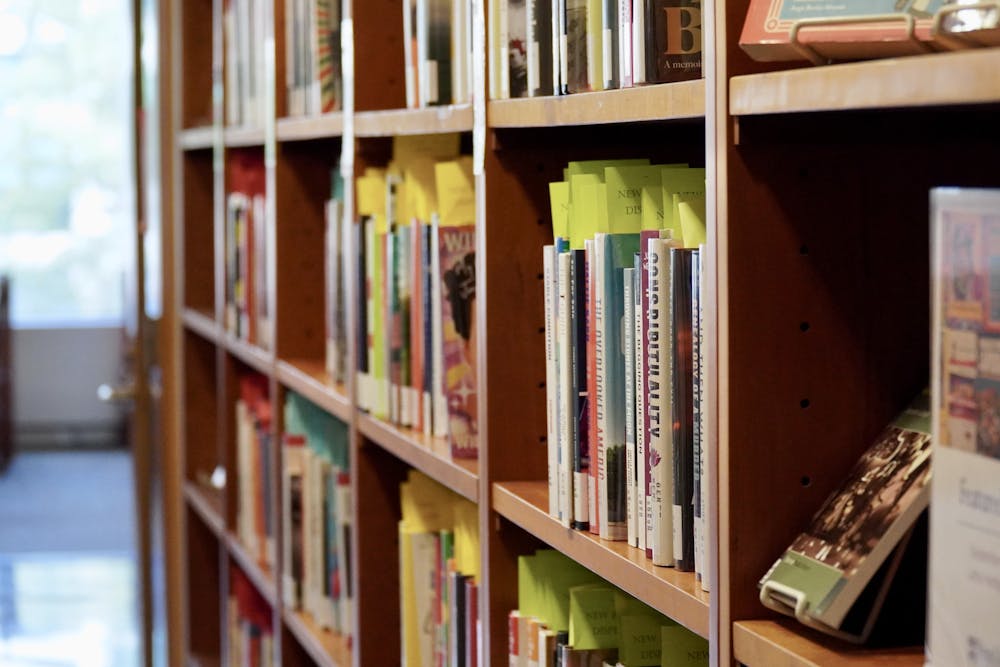Ananya’s Angle | Deep reading once shaped college education. Now it’s being replaced by shortcuts.
2 hours ago
Columnist Ananya Karthik examines how shortcut culture is stopping college students from meaningfully reading.
Credit: Gabriel Jung
Everyone’s talking about artificial intelligence. Or grade inflation. Or whether the humanities are dying. But the real crisis on college campuses? Students aren’t reading anymore. Not deeply. Not at all.
Yes, students still open PDFs and skim articles. They annotate pages, underline quotes, and write papers with citations. But sustained, reflective reading — the kind that forces you to slow down, sit with discomfort, and follow an argument longer than a caption — is slipping through the cracks. And with it, the intellectual core of higher education is weakening.
A 2022 report by the National Endowment for the Arts found that only 37.6% of adults in the United States aged 18 to 24 had read a work of fiction, poetry, or drama in the past year — a historic low. Even at colleges where Plato and Marcel Proust still get name-checked in course descriptions, students aren’t making it past the first page.
You can see it in the way many students engage with coursework: skim the intro, use the find function for a term, and read the Reddit thread. A 2024 Atlantic feature revealed that even at elite schools like Penn, students struggle to finish book-length assignments. Professors report assigning less because they know students won’t fully engage. One compared his reduced syllabus to a semester-long sampling rather than a complete text. Instead of reading closely, many stitch together summaries, lecture slides, and AI-generated overviews — not from laziness, but because the culture has shifted.
Today, reading no longer fits the rhythm of college life. In an academic culture saturated with deadlines, internships, and algorithmic multitasking, deep reading feels impractical, even indulgent. Students are rewarded not for wrestling with complexity, but for producing quick output.
And technology has made the trade-offs easy. Why read all of “The Odyssey” when Chat GPT-4 can explain it in three paragraphs and answer your discussion questions in five? Why read “The Souls of Black Folk” when TikTok has clips breaking it down in 60 seconds? These tools weren’t meant to replace reading, but that’s exactly how they’re being used. The act of reading is becoming optional — an accessory to the assignment, rather than the center of it.
The medium matters, too. Studies have long shown that screen reading diminishes comprehension and retention. A 2024 meta-analysis reviewing 49 studies confirmed that print reading leads to better understanding, stronger memory, and deeper engagement than digital formats. But the majority of assigned readings today are PDFs viewed on laptops — often while toggling between tabs or typing into Google Docs. When reading becomes indistinguishable from browsing, the brain adapts accordingly.
This has consequences — not just for grades, but for thought. The best classes rely on reading not as a box to check, but as a shared text from which curiosity and debate emerge. Reading levels the playing field: it demands attention, not experience. But when half the room hasn’t made it past page 10, even the sharpest seminar becomes shallow. The performance of learning remains, but the foundation is missing.
This isn’t a critique of students as much as it is of the system they’re navigating. Colleges increasingly prioritize skills, credentials, and job outcomes. And reading, especially the kind that isn’t clearly utilitarian, gets left behind. It’s easy to justify: students are busy, professors are under pressure, and everyone wants to feel productive. Reading is slow. Thoughtful. Quiet. None of those fit cleanly into the new metrics of success.
Still, there are places pushing back. Columbia University’s core curriculum continues to assign canonical texts like “The Republic,” “King Lear,” and “The Iliad.” At St. John’s College, students spend four years reading and discussing great books without slideshows or summaries. These programs aren’t relics. They’re countercultural experiments in what learning could still look like when time and attention are treated as assets, not inefficiencies.
At Penn, that kind of reflection does exist. One example is HIST 0012: “Why College? Historical and Contemporary Perspectives,” taught by professor Jonathan Zimmerman. The course invites students to interrogate the very institution they’re part of: who it’s for, what it promises, and how it falls short. In the class, students have the rare opportunity to read deeply, think slowly, and sit with uncomfortable questions about purpose and identity. For a few weeks, the goal wasn’t to extract a thesis or prep for a final — it was to think. And that alone made it stand out.
What’s really at stake in the decline of reading is a way of thinking. Deep reading builds habits—patience, nuance, the ability to hold conflicting ideas without rushing to resolve them. But higher education now runs on the assumption that students arrive having done the reading. Increasingly, they haven’t. And so classrooms become theater: discussion without substance, argument without grounding. At elite institutions, students get rewarded for it. As Rubén Gaztambide-Fernández observed in his journal “Bullshit as resistance: Justifying unearned privilege among students at an elite boarding school,” many see “bullshitting” not as a failure, but as a learned skill — one that allows them to appear capable while bypassing the actual intellectual work. The performance becomes the point.
Sign up for our newsletter
Get our newsletter, DP Daybreak, delivered to your inbox every weekday morning.
So yes, worry about AI. Worry about grade inflation. But also worry about what’s happening in plain sight. Students are graduating with high GPAs and polished résumés. But many are doing so without having truly sat with a book, a page, or even a paragraph that didn’t offer instant answers.
The collapse won’t come when students refuse to read. It’ll come with no one noticing that they stopped. Classes will carry on, essays will be turned in, and transcripts will fill up with A’s. But the slow, difficult work of thinking — of turning a sentence over in your head until it changes you — will be quietly missing. And by the time we realize what’s gone, we’ll have mistaken the performance of learning for the real thing.
ANANYA KARTHIK is a College freshman studying economics and communication from Aldie, Virginia. Her email is ananyakk@sas.upenn.edu.
The Daily Pennsylvanian is an independent, student-run newspaper. Please consider making a donation to support the coverage that shapes the University. Your generosity ensures a future of strong journalism at Penn.

